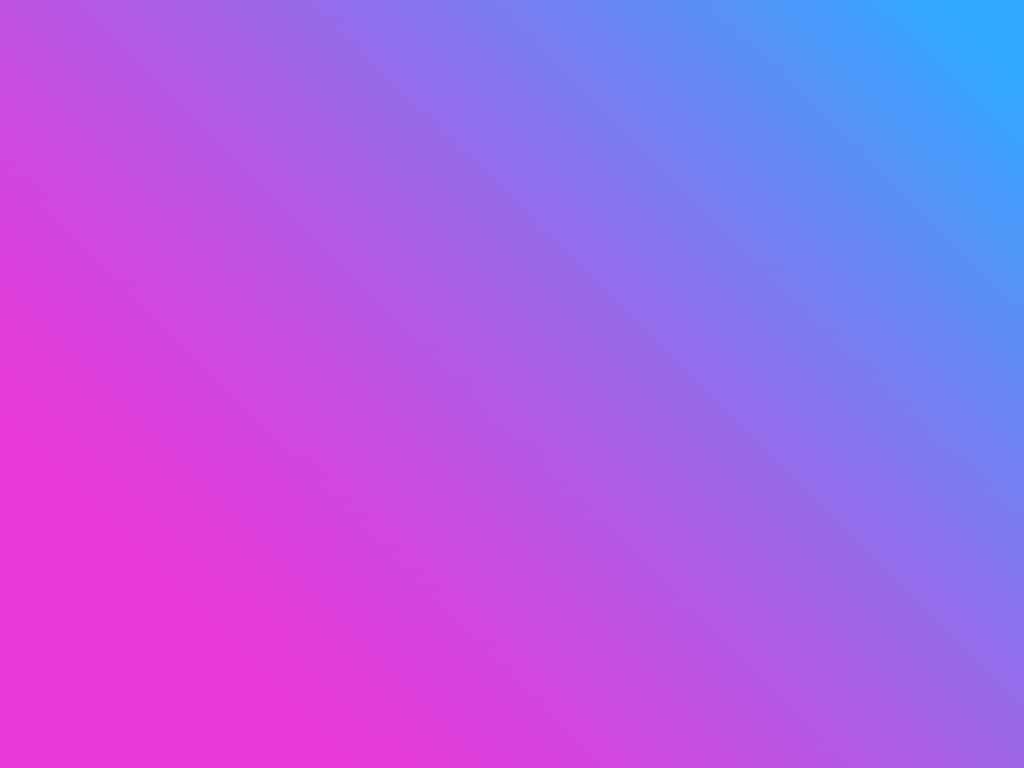“What color do blue and purple make when mixed?” is a common question in color theory and art. Are you thinking of a deep indigo, a lovely lavender, or a mixture? Anyway, purple and blue mixed together can produce various colors depending on the shades used. So let’s go find them.
Blue and purple are increasingly used in web design because they go well together. But have you ever wondered what color purple and blue do when mixed? Well, that’s what we’ll find out in today’s article.
Both purple and purple are cool colors located close together on the color wheel. They are analogous colors and can be used together. That’s where the harmony of this mix comes from.
Mixing blue and purple can have different results, depending on the shades you choose and the color model you use.
However, the results will be pretty similar. Understanding the resulting color of mixing blue and purple can help you create a beautiful color palettes.

Today, we’ll answer one of the most frequently asked questions in the art and design world: what color do blue and purple make when mixed?
What Color Do Blue and Purple Make When Mixing Paint?
Blue is a primary color in the RYB color model, used in painting and traditional art. In contrast, purple is a secondary color resulting from mixing two primary colors. For example, purple can be made by mixing red and blue.
Now you’re curious about what color purple and blue make when mixing paint.
By mixing blue (a primary color) with purple (a secondary color), you will get blue-purple, a tertiary color. So, blue and purple mixed together result in a so-called blue-violet. However, there are many shades of blue-purple; the most popular are purple, lavender, periwinkle, and indigo.
Thus, the result of mixing purple and blue depends on the shades of blue and purple used. In order to get a “pure” blue-purple, you must use equal parts of blue and purple.
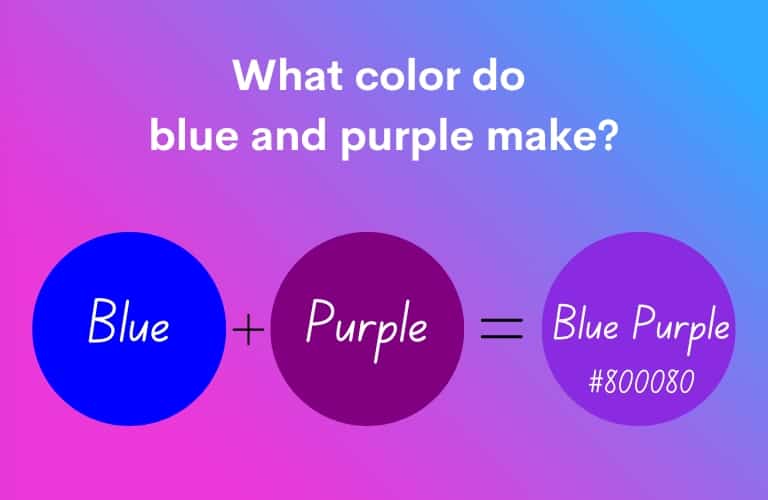
What are Tertiary Colors?
Tertiary colors are those created by combining primary and secondary colors. To get a better idea, look at the color wheel.
The RYB color wheel has three primary colors (red, yellow, and blue) and three secondary colors (orange, green, and purple). Thus, mixing the primary and secondary colors gives us 6 tertiary colors: red-orange, yellow-orange, yellow-green, blue-green, blue-violet, and red-violet.
Of course, these tertiary colors use a 50/50 mixture. Otherwise, you will get slightly different shades.
Types of Blue-Purple
There are plenty of blue-purple shades, and they take into account the following:
- the proportions of paint used in the mix
- the shades of blue and purple used
- the use of white or black in the mixture
Thus, some are closer to blue (bluish-purples), while others have more purple (purple-blues).
To have a better overview, here are some blue-purple types and the mixtures used:
- Lavender = Light Blue + Purple
- Periwinkle = Medium Blue + Purple
- Dark Purple = Navy Blue + Purple
By changing the ratio of blue and purple, you can get plenty of blue-purple shades. For example, if you add a bit more purple or blue, you get colors like lilac, mauve, plum, or indigo.
You can also add a bit of white when mixing blue and purple to get the same results. For example, adding a bit of white to your mix can create a lovely lavender shade. Or, if you add a bit of black, you might get indigo.
How to Make Blue-Purple Lighter or Darker
Mixing Lighter Colors
As I said above, adding white paint to your mixture can make the resulting shade lighter. If you don’t want to use too much white, you can try mixing lighter shades of blue or purple. These already have the amount of white in them needed to get a lighter shade of blue-purple.
Mixing Darker Colors
If you want to get a darker shade of blue-purple, you can add a little black paint to your mix. Or you can use darker shades like Blue Navy or Royal Purple.
If you find the resulting color too blue, you should understand that purple already contains blue in its composition. So, to get a more balanced shade, you can add more purple than blue.
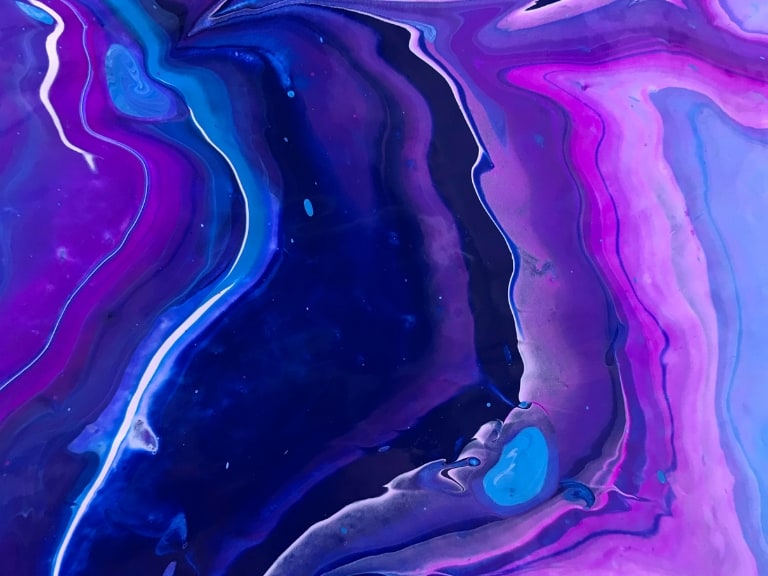
Does Blue-Purple Have a Meaning?
Blue-purple, resulting from mixing blue and purple – two of the coolest colors out there, borrows from the meanings of both colors. While blue is the color of trust and loyalty, purple is associated with mystery and imagination.
Thus, blue-purple is a color that could mean creativity, imagination, devotion, dignity, and inspiration.
Blue-purple is also a combo of calming and stimulating colors for the mind, making it an ideal color for meditation and self-reflection.
Moreover, it is a color that can help spark your imagination and help you see the world in a new light. In a light full of enthusiasm, creativity, and peace!
Also, blue-purple is an intriguing color and could be associated with a high level of mysticism.
Can You Mix Colors to Create Purple and Blue?
Even if you don’t have blue or purple paint, you can mix other colors to create them.
If you’re curious about what colors make blue, take some inspiration from the CMYK model, a subtractive color system. Subtractive color system? Yes! The color models in which you can use subtractive color mixing are RYB, used in the traditional art world, and CMYK, which is dedicated to the printing industry.
In the CMYK color space, blue is a secondary color, and purple is a tertiary color.
To get blue, you can mix cyan and magenta, two primary colors of the CMYK color model.
To get purple using subtractive color mixing, you need to mix blue and magenta. If we’re talking about the world of physics and light, purple can be obtained by combining blue and red light.
However, you should probably understand what subtractive color mixing is. Don’t worry! We’ll go over the color models in more detail below.
What Color Do Blue and Purple Make When Mixing Lights?
If we talk about lights, a purple and blue mix is rarely used because the RGB color model uses violet (and not purple). Wondery why? Because it is a spectral color with a well-defined wavelength range, compared to purple, which scientists consider a visual perception. [1]
In the RGB color model, blue is a primary color. At the same time, purple is a tertiary color resulting from mixing blue light with magenta light.
By mixing blue and violet in lights, you get blue-violet.
Hopefully, you now understand what color do blue and purple make when mixed.
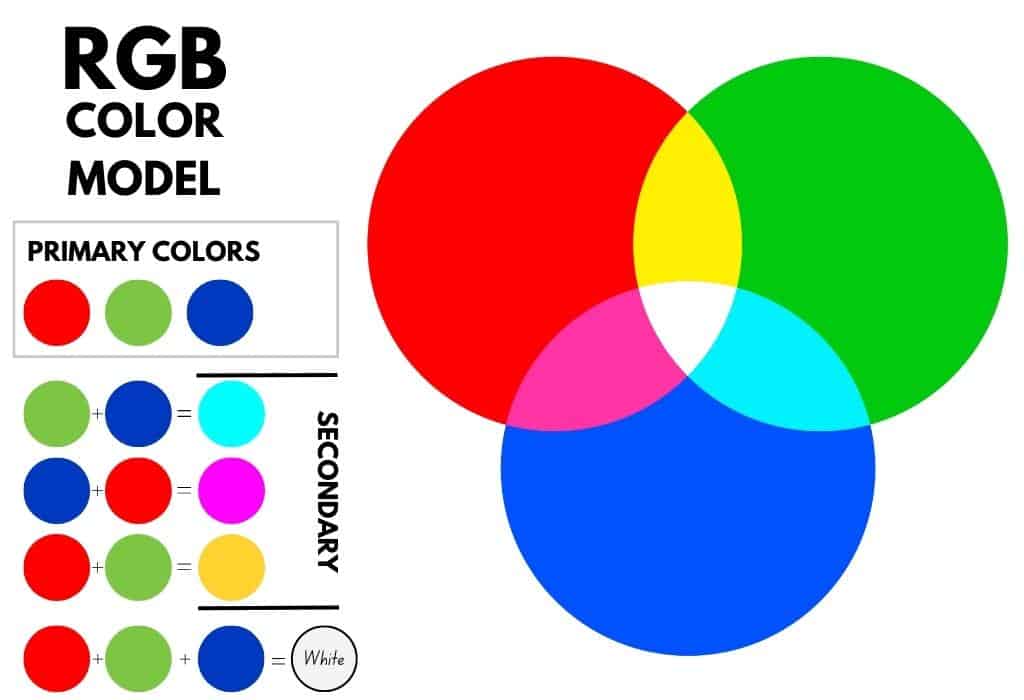
Understanding Different Color Models
When it comes to physics and light, there is only the RGB color model is used. When it comes to inks, there is the CMYK color model. When discussing traditional art, the RYB color model is applied.
While RYB and CMYK are subtractive color models, RGB is an additive color model.
The additive color model begins with black and adds colored light to produce a brighter result. In contrast, the subtractive color model begins with white and adds color to create a darker result.
RGB
RGB is an additive color model that uses light to display color. So it is used to mix lights.
The primary colors of light (in the RGB color model) are red, green, and blue. They are considered additive colors. Combining two primary colors results in subtractive colors: cyan, magenta, and yellow – which align with the CMYK color model.
So, when you mix light:
- Green and blue make cyan
- Red and green make yellow
- Blue and red make magenta
By combining these three primary colors together, you get white light.
RYB
If we’re talking about traditional art, you’ve certainly heard of the RYB color model.
RYB is an additive color model used for mixing paints. The primary colors of RYB are red, yellow, and blue.
When you mix paints:
- Red and yellow make orange
- Yellow and blue make green
- Blue and red make purple
So orange, green, and purple are the secondary colors of the RYB color space.
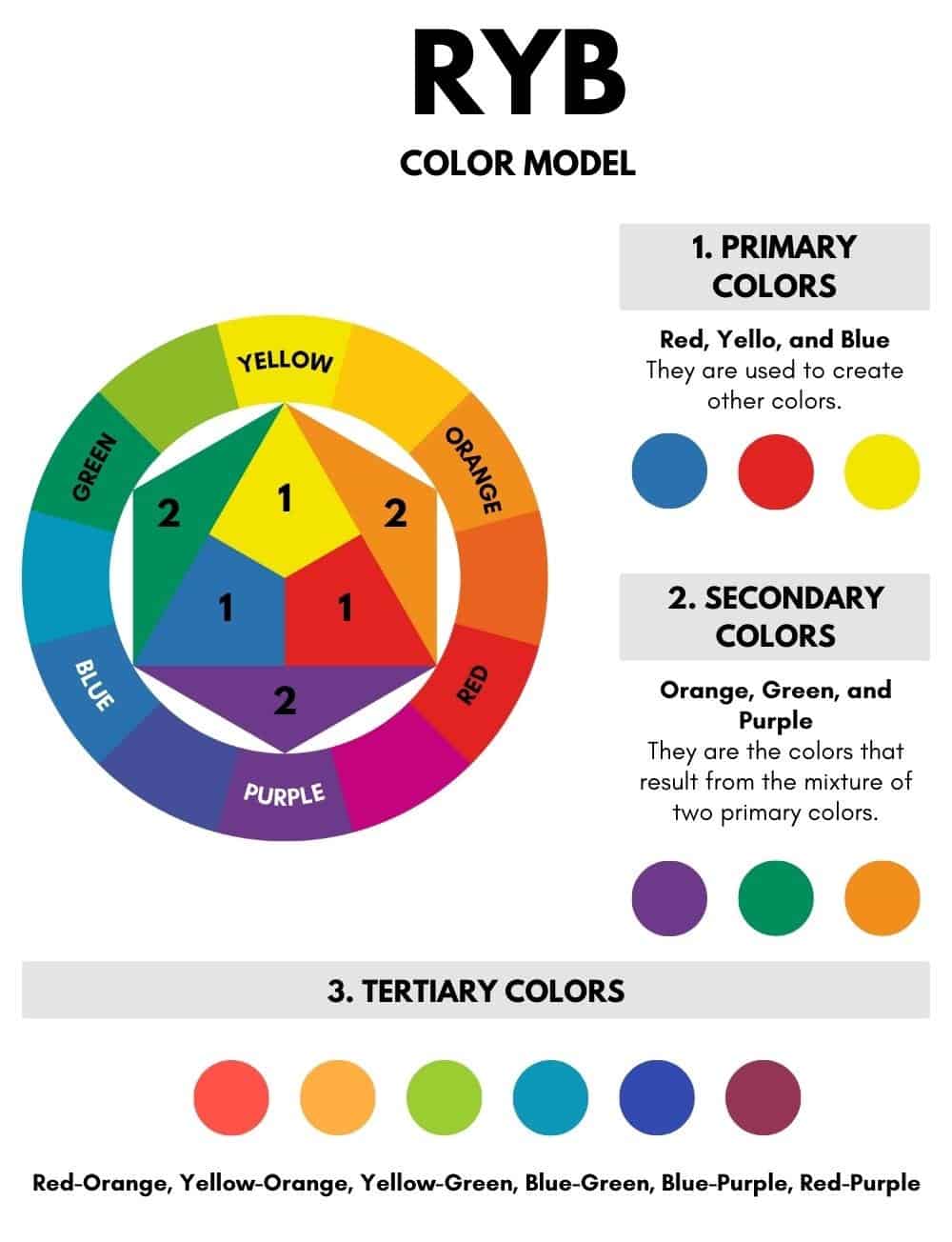
CMYK
CMYK is a subtractive color model used in printing. It uses the primary subtractive colors: cyan, magenta, and yellow. Mixing the three primary colors together results in black. In the CMYK color space, mixing two primary colors together results in the secondary colors: red, green, and blue – which are the additive colors.
When you mix ink:
- Magenta and yellow make red
- Cyan and yellow make green
- Cyan and magenta make blue
Furthermore, unlike the additive color system, which produces white light by combining the three primary colors in equal parts, the subtractive color system produces black by combining the three colors in equal parts.
Blue and Purple in Different Color Models
In the RYB color model, used in painting, blue is a primary color while purple is a secondary color.
In the CMYK color space, used in printing, blue is a secondary color, and purple is a tertiary color.
In the RGB color model, which uses light, blue is a primary color, while purple is a tertiary color.
When blue and purple are mixed together, the result is blue-purple or blue-violet in any of these color models.
Violet vs. Purple
Purple
Hex: #800080
RGB: 128, 0, 128
CMYK: 0, 100, 0, 50
Violet
Hex: #8F00FF
RGB: 143, 0, 255
CMYK: 44, 100, 0, 0
Although most people confuse these colors, purple and violet are different colors.
Purple is a mixture of red and blue paint in equal proportions, while violet is a mixture of 50% magenta and 50% cyan.
You can also make violet by mixing blue and red, but you need to add more blue!
Technically, in the world of physics, purple is considered a color, while purple is only a visual perception. This is because violet exists on the visible spectrum of light, having a wavelength between 380 and 450 nanometres. So it is a spectral color!
In contrast, purple does not have an explicit wavelength, being more a matter of perception.
Using Blue and Purple in Design
Did you know that blue and purple are both cool colors? That means they have a calming and creative effect whether you use them in web design or interior design.
So, if you want to create a peaceful and relaxing atmosphere in your home or office, using blue and purple together could be a great choice.
Moreover, blue and purple complement each other because they are adjacent colors on the color wheel. For this reason, they are also called analogous colors.
Thus, an analogous color scheme means using two or three colors that are adjacent to each other. This means using blue and purple, or mixtures between them, results in a harmonious color scheme.
If you’re thinking about redesigning your home, blue and purple can work together in a variety of ways.
For example, blue-purple shades complement neutral colors well (gray, white, black, or even tan). However, we recommend using it as an accent color or light source rather than a wall color because it can become overwhelming.
Or you could use blue as the dominant color and add pops of purple as accents.
When it comes to web design, ombré patterns are a unique way to combine blue and purple together.
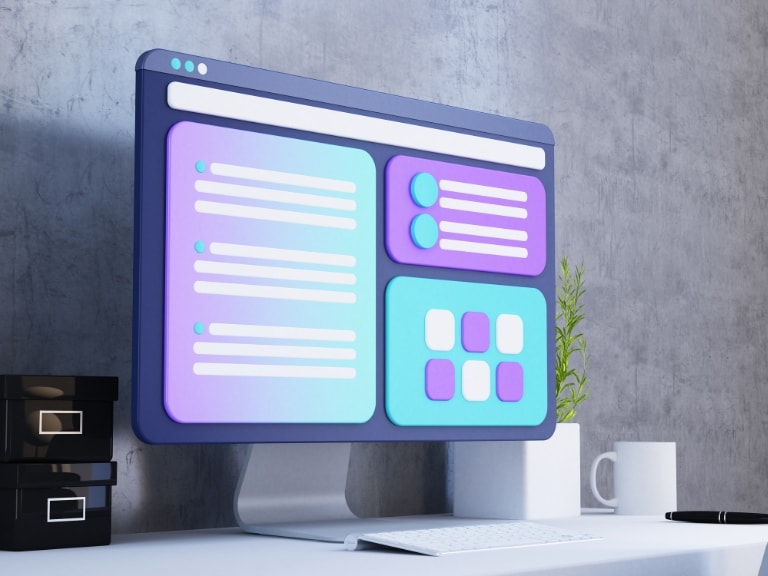
Ombré is a gradient effect that blends one color into another. Thus, you could use blue and purple to create an ombré effect for a captivating and calming design.
If you want to use shades of blue-purple in your design, you can choose complementary colors like the ones opposite on the color wheel.
For example, blue violets go well with shades of orange and purple with shades of yellow.
The more blue your blue-purple shade contains, the better it will look with shades of orange. If your shade is closer to purple, choose shades of yellow. This way, you can go right!
F.A.Q.
What color do purple and blue make when mixed?
When you mix the primary color blue with the secondary color purple, you create a tertiary color known as blue-purple or blue-violet. This color can vary in shade depending on the specific hues used, with popular variations including purple, lavender, periwinkle, and indigo.
What color do purple and light blue make when mixed?
When purple and light blue are mixed together, they create a soft, pastel shade of bluish-purple commonly known as lavender or periwinkle.
What color do dark blue and purple make when mixed?
When dark blue and purple are mixed together, they typically create a dark, rich shade of bluish-purple known as dark purple. The resulting color may vary depending on the specific shades of dark blue and purple used.
Did you like this article about what color blue and purple make when mixed? Help us spread the word by sharing it with your friends who might be interested.

